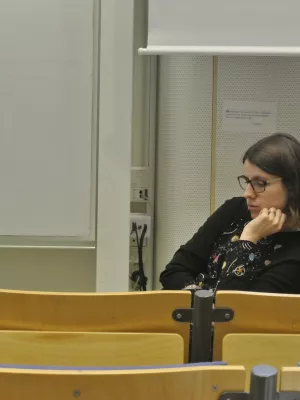
Sanna Alwmark
Postdoc

Overview and Results From the Mars 2020 Perseverance Rover's First Science Campaign on the Jezero Crater Floor
Författare
Summary, in English
The Mars 2020 Perseverance rover landed in Jezero crater on 18 February 2021. After a 100-sol period of commissioning and the Ingenuity Helicopter technology demonstration, Perseverance began its first science campaign to explore the enigmatic Jezero crater floor, whose igneous or sedimentary origins have been much debated in the scientific community. This paper describes the campaign plan developed to explore the crater floor's Máaz and Séítah formations and summarizes the results of the campaign between sols 100–379. By the end of the campaign, Perseverance had traversed more than 5 km, created seven abrasion patches, and sealed nine samples and a witness tube. Analysis of remote and proximity science observations show that the Máaz and Séítah formations are igneous in origin and composed of five and two geologic members, respectively. The Séítah formation represents the olivine-rich cumulate formed from differentiation of a slowly cooling melt or magma body, and the Máaz formation likely represents a separate series of lava flows emplaced after Séítah. The Máaz and Séítah rocks also preserve evidence of multiple episodes of aqueous alteration in secondary minerals like carbonate, Fe/Mg phyllosilicates, sulfates, and perchlorate, and surficial coatings. Post-emplacement processes tilted the rocks near the Máaz-Séítah contact and substantial erosion modified the crater floor rocks to their present-day expressions. Results from this crater floor campaign, including those obtained upon return of the collected samples, will help to build the geologic history of events that occurred in Jezero crater and provide time constraints on the formation of the Jezero delta.
Avdelning/ar
- Berggrundsgeologi
Publiceringsår
2023-06
Språk
Engelska
Publikation/Tidskrift/Serie
Journal of Geophysical Research: Planets
Volym
128
Issue
6
Dokumenttyp
Artikel i tidskrift
Förlag
Wiley-Blackwell
Ämne
- Geology
Nyckelord
- Jezero
- Mars
- Perseverance
- rover
Status
Published
ISBN/ISSN/Övrigt
- ISSN: 2169-9097

